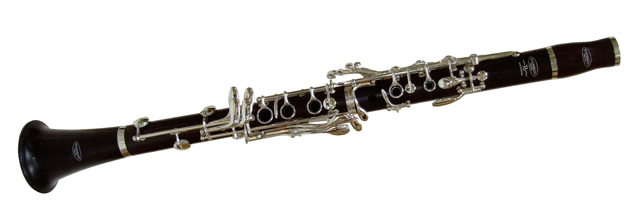The new black
Musical instrument makers are based predominantly in the Far East making a British designed clarinet something of a rarity.

West Yorkshire-based Hanson stands out further for its sustainable design credentials becoming the world’s first FSC Certified maker of woodwind instruments in 2011.
Alastair Hanson founded his musical instrument making business in 1989 with support from charitable foundation The Prince’s Trust. The company now produces a selection of woodwind and brass instruments from its base in Marsden. All parts of the clarinet begin life in CAD, with the design built into a 3D model in SolidWorks.
Hanson manufactures its own products in its semi-automated facility using a wide range of CNC machinery.
The CAD model is prepared for manufacture by taking the model into Delcam PowerShape and then defining the CNC processes by using PowerMill.
When beginning work on the body of the clarinet the centre hole or ‘pilot bore’ is cut first; the best way to do this is by a process called ‘gun-drilling’.
The digital design and manufacturing process enables Hanson to cut a superbly smooth and accurate bore – important, as the bore is critical to the sound, tone and response of the clarinet.
Next the outside profile, tone holes, key post fi xings and tone hole ‘undercuts’ are made using computer controlled CNC high precision cutters accurate up to seven microns.
A Next Engine 3D scanner is used to verify the parts, and also to aid any reverse engineering that might be needed.
Hanson continues to seek out new and improved design elements for musicians in their instruments.
Currently its R&D department is experimenting with composite materials to replace traditional cork seals, and even opposing magnets instead of springs.
Steampunk punk rocker
From Buddy Holly’s monochrome Fender Stratocaster, to Prince’s exuberant purple squiggle, there’s a guitar design for all tastes and seasons; but now designs can be built as wild as your imagination.

Long-standing design engineer and professor of mechatronics at Massey University, Auckland, New Zealand, Olaf Diegel has created previously impossible guitar designs using 3D printing.
With 15 years of 3D printing knowhow, Diegel now runs ODD Guitars. Despite offering various wild designs – influenced by everything from spiders to steampunk machinery – all the creations can be individually customised to the customer’s most minute demands.
The designs are completed in SolidWorks from Diegel’s base in New Zealand, before the body is printed in the US using 3D Systems’ SLS 3D printers.
The chosen matching colour neck attaches to a wooden core contained within the body. The hardware, such as the pickups, bridges and necks, are all off-the-shelf hardware so customers can match these to their personal design.
Diegel’s designs have expanded from simply guitars to encompass the entire band, including 3D printed keyboard casings and even a drum set.
Prices start at $3,000 for a small body guitar, so we recommend you get practising first.
Turning it up to fortissimo
Taking up the challenge of a friend to design an electric violin 20 years ago, Lincoln-based engineer Ted Brewer has produced eye-catching, contemporary instruments for some of the best violin players around the world.

Skeletal in its appearance, the violin is balanced to suit the musician who might have it perched on their shoulder for long periods.
The clear body can be fitted with LED lights and touch-sensitive controls but, most importantly for an electric violin, the sound can be customised and amplified, filling an entire arena if needs be.
The original design was hand shaped from balsa wood and car body filler, using hand drawings for guidance.
From this a further prototype was hand carved from a block of acrylic, before being sent to China for the initial tooling to be undertaken for polycarbonate injection moulding.
Since then the violin bodies have been moulded in the UK, and Brewer has continued to advance the design and technology used.
Producing a limited run of around 25 violins each year he has invested in technology for small-scale manufacturing.
The 3D CAD work has been outsourced, but an in-house CNC laser cutter now produces the clear acrylic fingerboards and a new 3D printer will be used to produce some interior components.
We take a look at some modern instrumental marvels
Default






